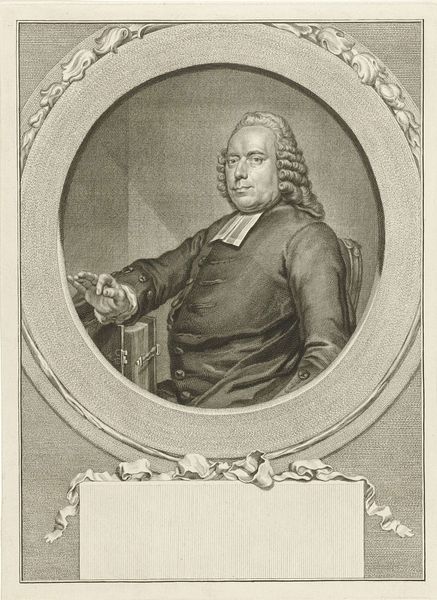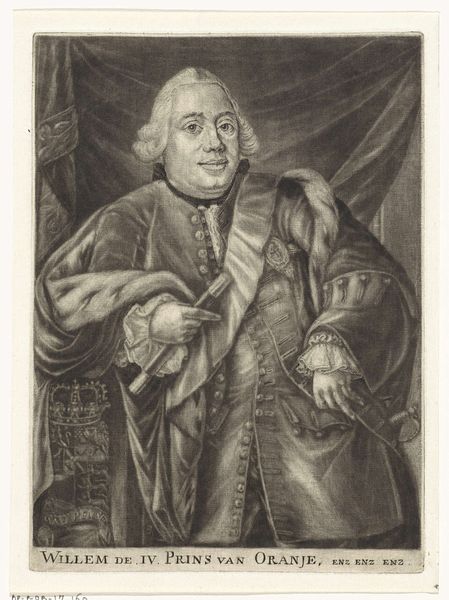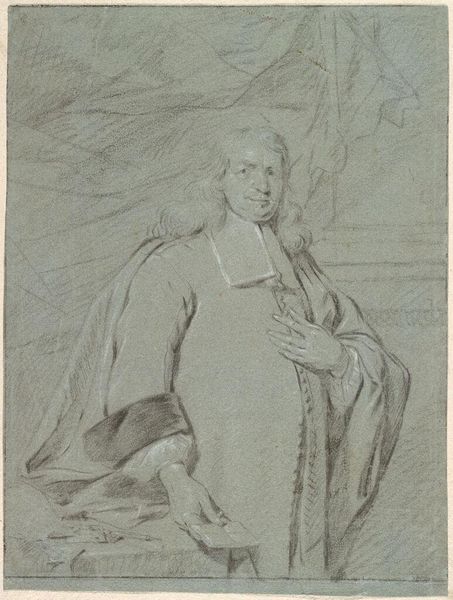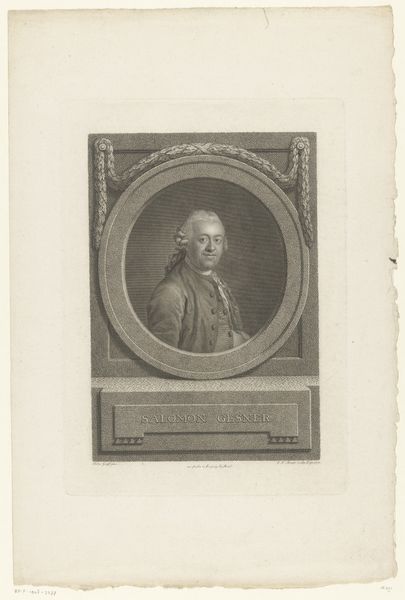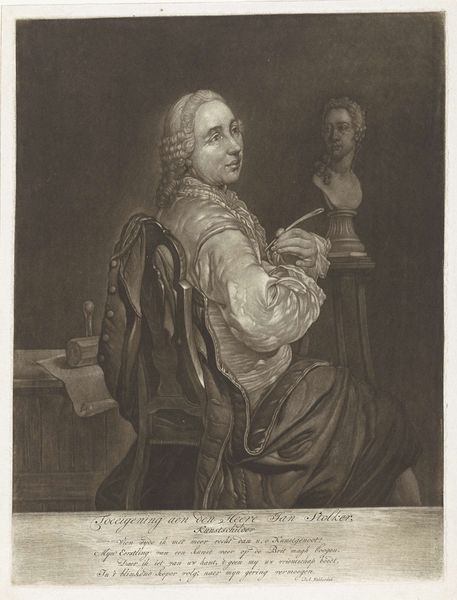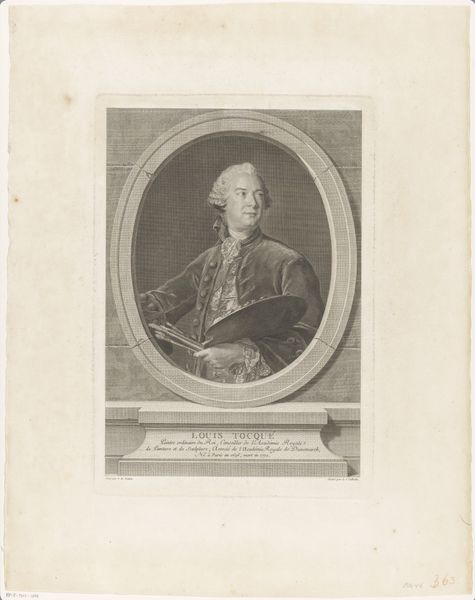
print, engraving
#
portrait
#
neoclacissism
# print
#
old engraving style
#
history-painting
#
engraving
Dimensions: height 370 mm, width 261 mm
Copyright: Rijks Museum: Open Domain
Pieter Hendrik Jonxis created this portrait of David Ruhnken as an engraving. Observe the heavy curtain that frames Ruhnken. In antiquity, curtains and drapes were not merely decorative; they signified a transition from the mundane to the sacred, often seen in depictions of religious or royal figures. Consider how the use of drapery as a backdrop has recurred through the Renaissance and Baroque periods, symbolizing authority and theatricality. Think of Bernini's sculptures, where fabric swirls with life, conveying not just opulence, but a sense of divine presence. Even in simpler portraits, the curtain hints at a constructed reality, a deliberate staging of identity. Our collective memory associates these symbols with power, influencing our perception. This portrait taps into those associations, subtly elevating Ruhnken's status. The curtain serves as a psychological trigger, engaging our ingrained understanding of status and importance. It is a powerful emblem that evokes a range of subconscious reactions, underscoring how symbols persist, evolve, and continue to resonate across time.
Comments
No comments
Be the first to comment and join the conversation on the ultimate creative platform.




